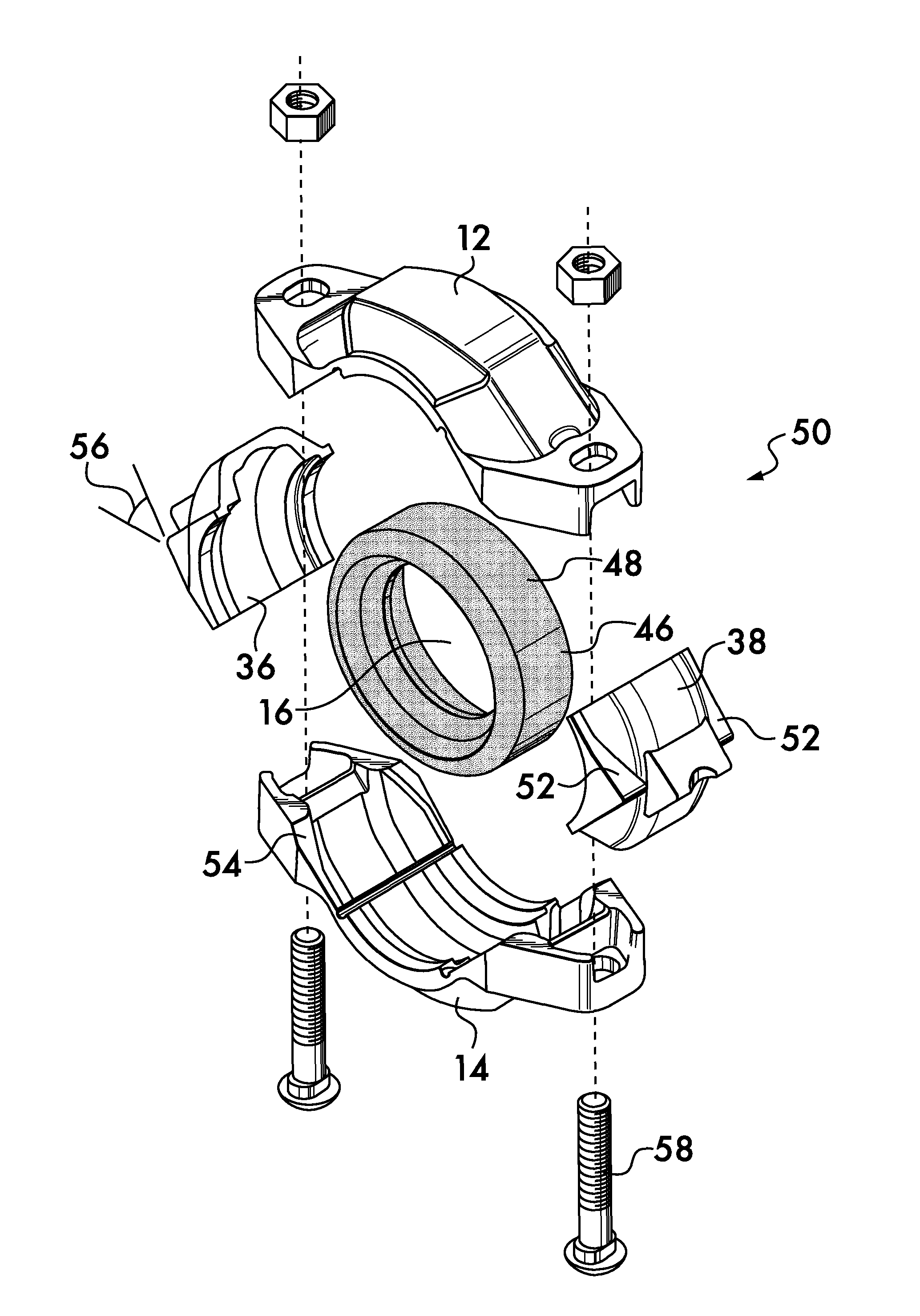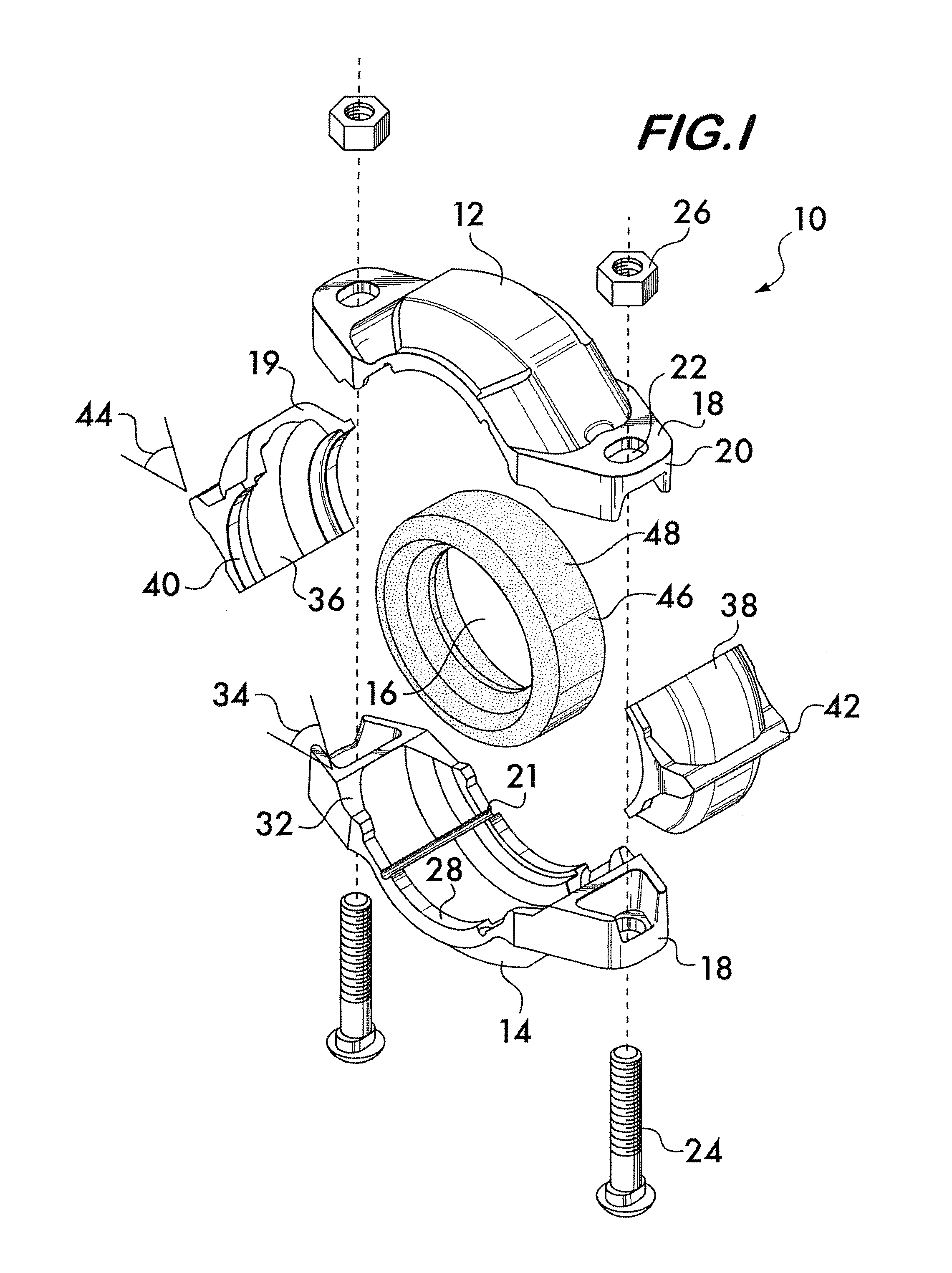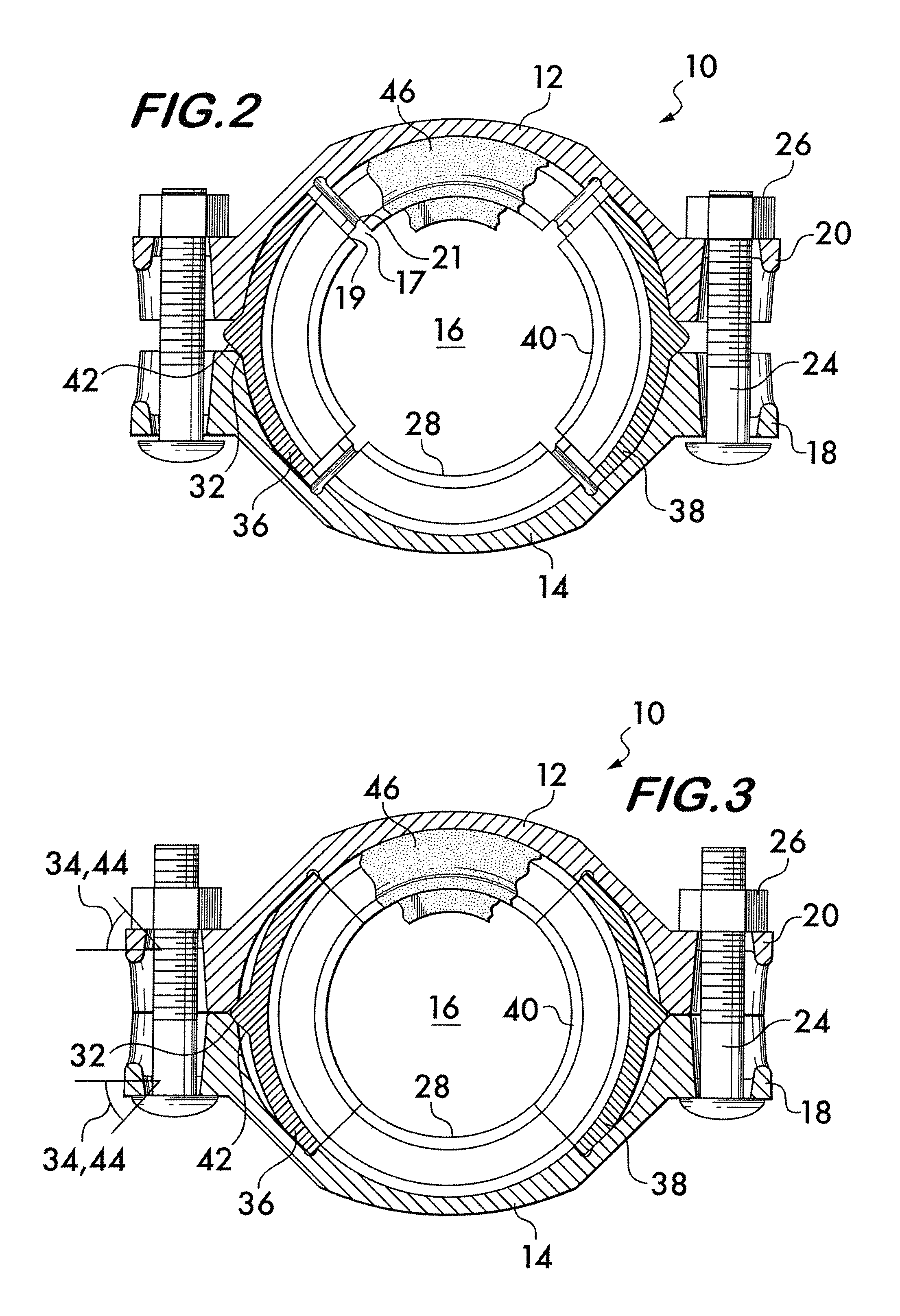Pipe coupling having movable gripping bodies
a gripping body and pipe technology, applied in the field of couplings, can solve the problems of limited value of power tools and inability to use power tools which cause electrical sparking in environments
- Summary
- Abstract
- Description
- Claims
- Application Information
AI Technical Summary
Benefits of technology
Problems solved by technology
Method used
Image
Examples
embodiment 10
[0027]FIG. 1 shows an exploded isometric view of a coupling embodiment 10 according to the invention. Coupling 10 comprises a plurality of segments 12 and 14. Segments 12 and 14 are connectable end-to-end to surround a central space 16. Connection of the segments is effected by connection members 18 positioned at opposite ends of each of the segments 12 and 14. In this embodiment, the connection members comprise projections 20 which extend outwardly from the ends of the segments. Projections 20 have apertures 22 adapting them to receive fasteners, such as bolts 24 and nuts 26. The fasteners are adjustably tightenable and cooperate with the projections 20 for drawing the segments 12 and 14 toward the central space 16 upon tightening.
[0028]Each segment has a pair of arcuate surfaces 28. Surfaces 28 are positioned in spaced relation to one another and face the central space 16. The arcuate surfaces engage and retain pipe elements 30 (see FIG. 4) when the fasteners connecting projection...
embodiment 11
[0035]FIG. 4A illustrates another embodiment 11 of a coupling according to the invention. In this embodiment, the contact surfaces 42 on the gripping bodies 36 and 38 have a convex shape. This permits them to engage the reaction surfaces 32 tangentially when the segments 12 and 14 are drawn toward one another, resulting in reaction forces which cause motion of the gripping bodies toward the central space. The reaction surfaces 32 are angularly oriented. FIG. 4B shows another embodiment 13 wherein the reaction surfaces 32 have a convex shape and the contact surfaces 42 are angularly oriented. This again allows for tangential engagement between the reaction surfaces and the contact surfaces, resulting in reaction forces which cause motion of the gripping bodies toward the central space as the segments 12 and 14 are drawn toward each other.
embodiment 50
[0036]FIG. 5 shows an isometric exploded view of another coupling embodiment 50 according to the invention. Coupling 50 has gripping bodies 36 and 38 with contact surfaces 52 positioned on opposite sides of the gripping bodies. Again, the contact surfaces are angularly oriented with respect to the connection members 18 and interface with reaction surfaces 54 positioned on the connection members 18. Orientation angles 56 for the contact surfaces from about 30° to about 60° are advantageous for this coupling design. It is preferred that the orientation angle of the reaction surfaces 54 be approximately the same as the contact surfaces as shown in FIG. 8.
[0037]Upon assembly of the coupling 50, a seal 46 is captured within the central space 16 by the segments 12 and 14 and the gripping bodies 36 and 38. Seal 46 ensures that the coupling 50 provides a fluid-tight joint between pipe ends. The seal is sized so that, in an undeformed state, its outer circumference 48 supports the segments 1...
PUM
 Login to View More
Login to View More Abstract
Description
Claims
Application Information
 Login to View More
Login to View More - R&D
- Intellectual Property
- Life Sciences
- Materials
- Tech Scout
- Unparalleled Data Quality
- Higher Quality Content
- 60% Fewer Hallucinations
Browse by: Latest US Patents, China's latest patents, Technical Efficacy Thesaurus, Application Domain, Technology Topic, Popular Technical Reports.
© 2025 PatSnap. All rights reserved.Legal|Privacy policy|Modern Slavery Act Transparency Statement|Sitemap|About US| Contact US: help@patsnap.com



